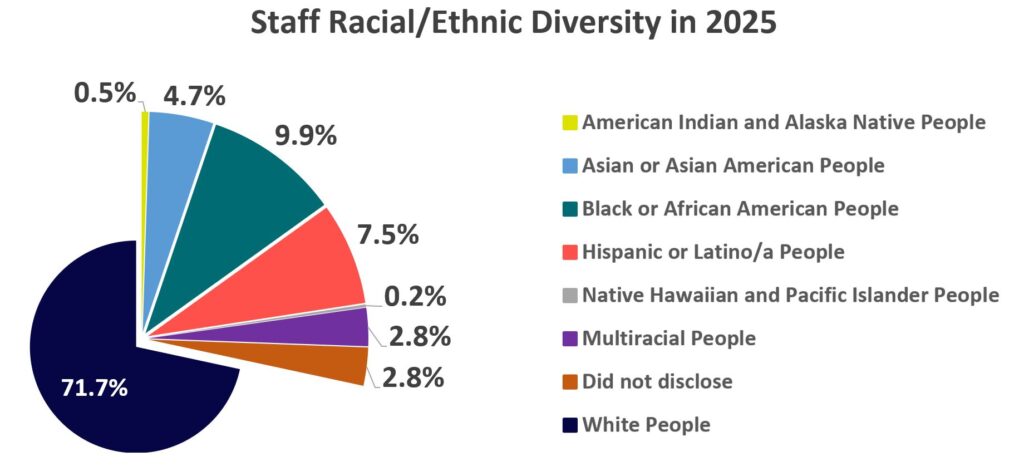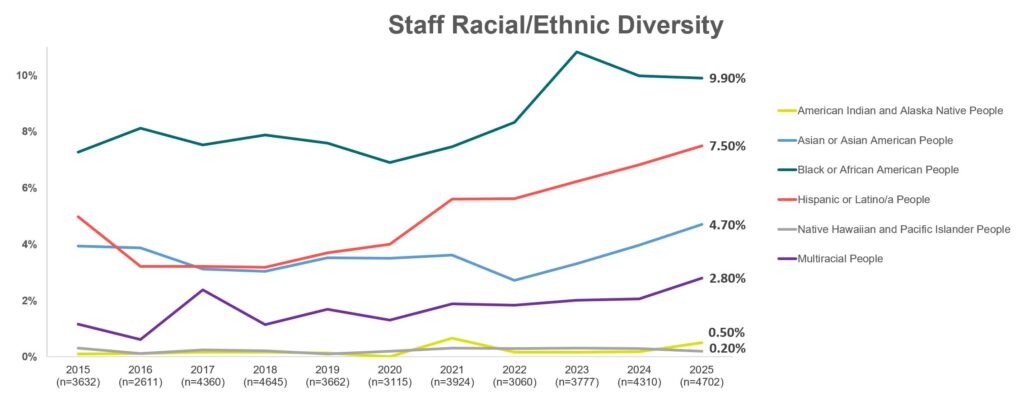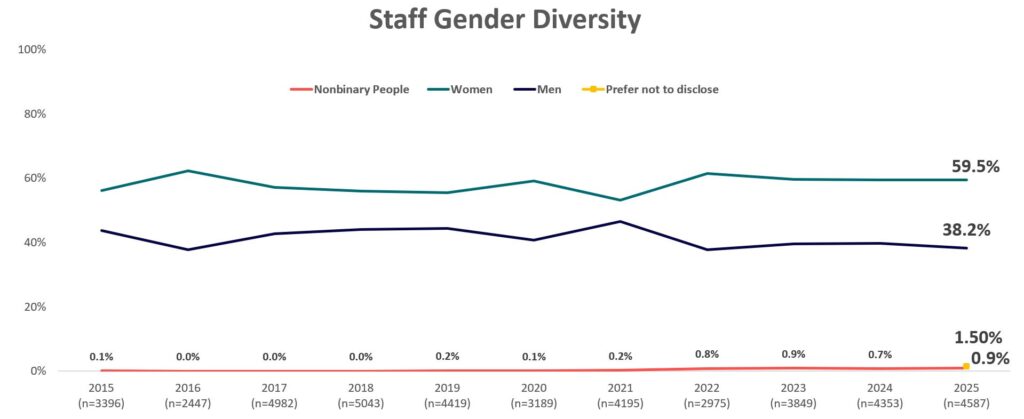Staff Diversity
In This SectionAfter a decade of moderate overall growth—including a notable rise in Black representation during the pandemic years—people of color made up 25.5% of the orchestra staff workforce in 2025.
As seen in other performing arts sectors, women consistently outnumbered men throughout the decade, while non-binary representation saw a notable increase from a low starting point.
Further research is needed to explore how race, gender, and power intersect—and how they shape who holds power within orchestra hierarchies.
This data includes part-time and seasonal staff, as well as top executives, though it is heavily weighted toward non-executive roles.
2025 Snapshot


Why does the League track orchestra demographics? How was this data analyzed? What steps are orchestras taking to improve diversity of representation? Visit our Frequently Asked Questions.
2015-2025 Trends

Modest increases across nearly all demographic groups for people of color contributed to overall staff diversity growth, bringing the total percentage of orchestra staff members who identified as people of color from 17.8% in 2015 up to 25.6% in 2025.
Throughout the 2015-2025 period, Black individuals, women, and non-binary individuals were better represented among orchestra staff than in any other orchestra role. In contrast, American Indian, and Native Hawaiian representation saw little to no increase over the decade.

Women’s representation remained steady at around 60%, a level comparable to the opera sector.
Meanwhile, non-binary representation grew significantly, rising from just 0.1% in 2015 to 0.9% in 2025, marking a notable shift from a low starting point.
Visit our Frequently Asked Questions page for more information about how this data is analyzed, the value of the metric we present in measuring change, and the work underway by orchestras to improve diversity of representation.
More Resources
Across the U.S. workforce, systemic inequities have resulted in Black, women, and non-binary employees being concentrated in lower-paid, part-time and / or seasonal positions. Further research is needed to explore how race, gender, and power intersect—and how they shape who holds power within orchestras. The League’s learning and leadership programs offer support in building the inclusive organizational cultures essential in building and retaining a diverse staff team.
Become a member
Thank you for your interest in the League of American Orchestras! We are dedicated to advancing the orchestral experience for all.
Join Now